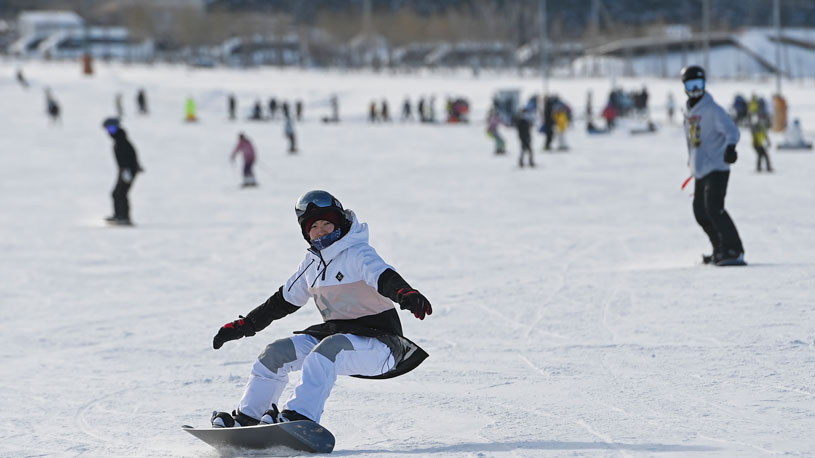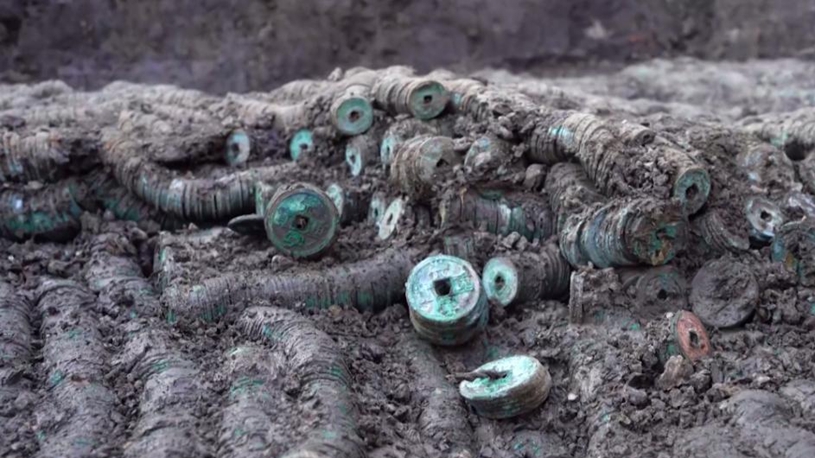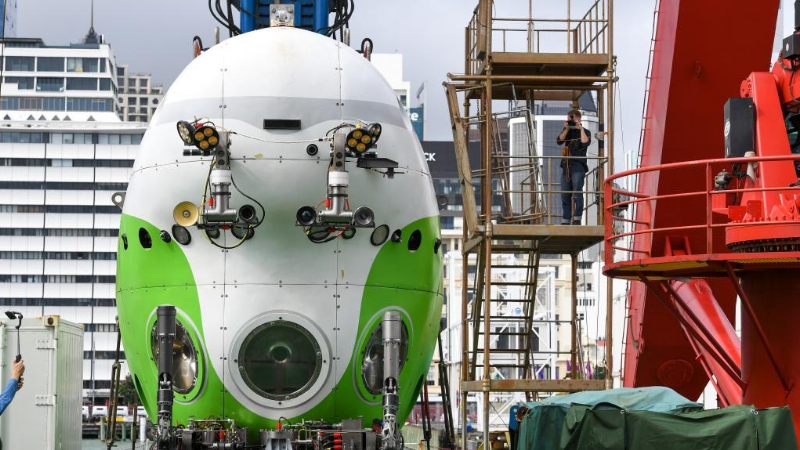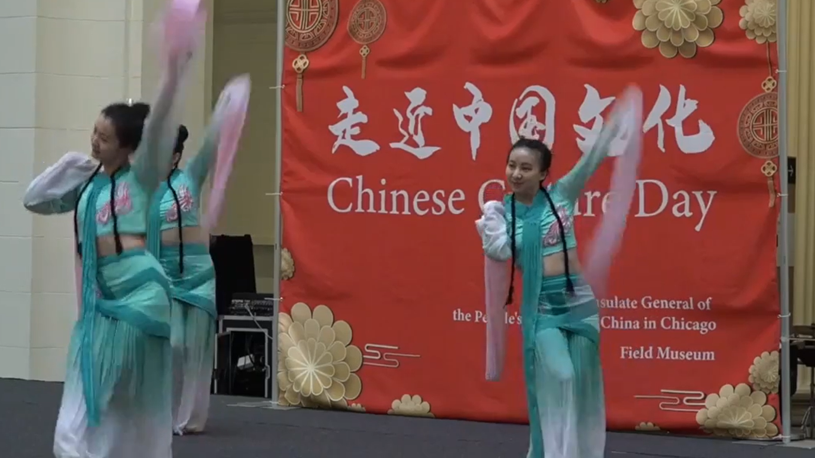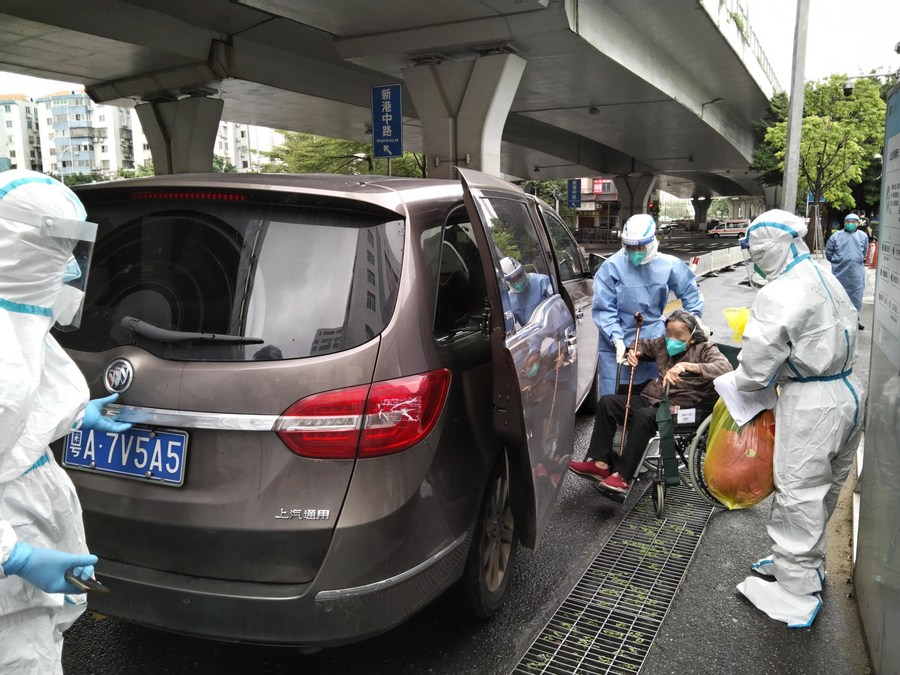
Medical workers help a 101-year-old COVID-19 patient surnamed Li as she leaves the Guangdong Second Provincial General Hospital in Guangzhou, south China's Guangdong Province, Nov. 26, 2022. (Guangdong Second Provincial General Hospital/Handout via Xinhua)
BEIJING, Dec. 14 (Xinhua) -- China is continuing its optimization of COVID-19 epidemic prevention and control measures as it shifts the focus of its response strategy from curbing new infections to preventing and treating severe cases.
For the time being, the country is working all-out to protect those most susceptible to infections and address the people's medical needs.
On Tuesday, during an investigation tour in Beijing, Chinese Vice Premier Sun Chunlan called for better protection of the elderly, children, patients with underlying diseases, pregnant women, hemodialysis patients, and other vulnerable groups.
The vice premier also said the pressing task at the moment is supporting the city in ensuring its residents' access to medical services and medication, adding that medical institutions must treat patients whether they are COVID-19 patients or not.
These directives are in line with a new set of measures announced on Dec. 7. The 10-point measures include proposing home quarantine for mild and asymptomatic cases and reducing nucleic acid tests to make it easier for people to travel and enter public venues.
The new measures signify the country's resolution to make its COVID-19 response measures suit the ever-changing epidemic situation.
Currently, new infections in Beijing are rapidly growing. But the vast majority of cases are asymptomatic and mild cases. There are 50 severe and critical cases in hospitals, most of whom have underlying health conditions, according to official sources.
The virus is more likely to cause severe illness when it infects the elderly, said Li Yanming, a respiratory expert at the Beijing Hospital, adding that being fully vaccinated and receiving booster jabs can significantly reduce the incidence of severe conditions.
In the meantime, the elderly are encouraged to ease their mind about vaccination. Wang Huaqing, a leading Chinese immunologist, pointed out that not many people aged 60 and above have had adverse reactions to COVID-19 vaccination.
As of Tuesday, 91 percent of people aged 60 and above have been vaccinated in China, and 86.6 percent were fully vaccinated, and the current rate of full inoculation among people aged 80 and older is 66.4 percent.
On Wednesday, the government announced that it would offer a second booster dose of the COVID-19 vaccine to vulnerable groups who had received their first booster shot more than six months ago. Only weeks before, the country released a work plan to improve the vaccination rate among the elderly.
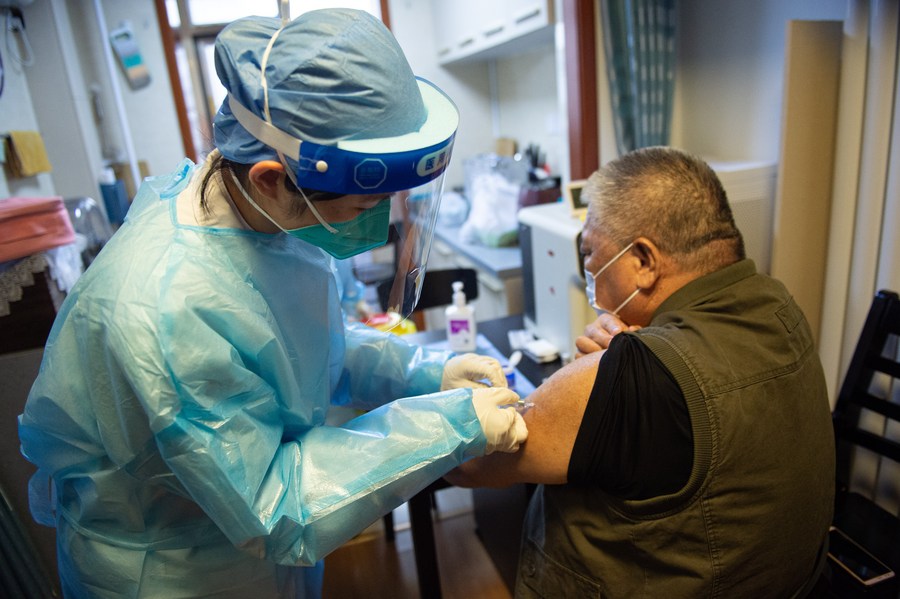
An elderly resident receives a shot of the COVID-19 vaccine at home during a medical service for senior citizens in Dongcheng District of Beijing, capital of China, May 10, 2022. (Xinhua/Chen Zhonghao)
For seniors unable or unwilling to take a shot from a syringe, inhalable COVID-19 vaccines are being rolled out in cities including Beijing and Shanghai, providing them a needle-free option to fend off the virus.
China has also strengthened efforts to provide medical and health services for pregnant women and children amid the epidemic, highlighting the importance of traditional Chinese medicine in treatment and prevention.
Medical institutions at all levels are required to guarantee the "green lanes" for emergency cases and first aid involving pregnant women and children.
In the meantime, China is also developing measures to address the need of all residents for medical services. For instance, in Beijing, all the 349 community healthcare centers in official operation have set up a dedicated outpatient area to provide diagnosis and treatment for patients with fever, according to Li Ang, vice director of the Beijing Municipal Health Commission.
Li added that efforts have been made to expand the capacity of fever clinics and consulting rooms and increase medics across the city.
The city has also published information about family doctors or teams in each district, including the services they provide and their contact information, enabling the public to seek help when in need.
According to official data, as of Wednesday, more than 47,000 fever clinics have been set up in medical and health institutions across the country. ■

